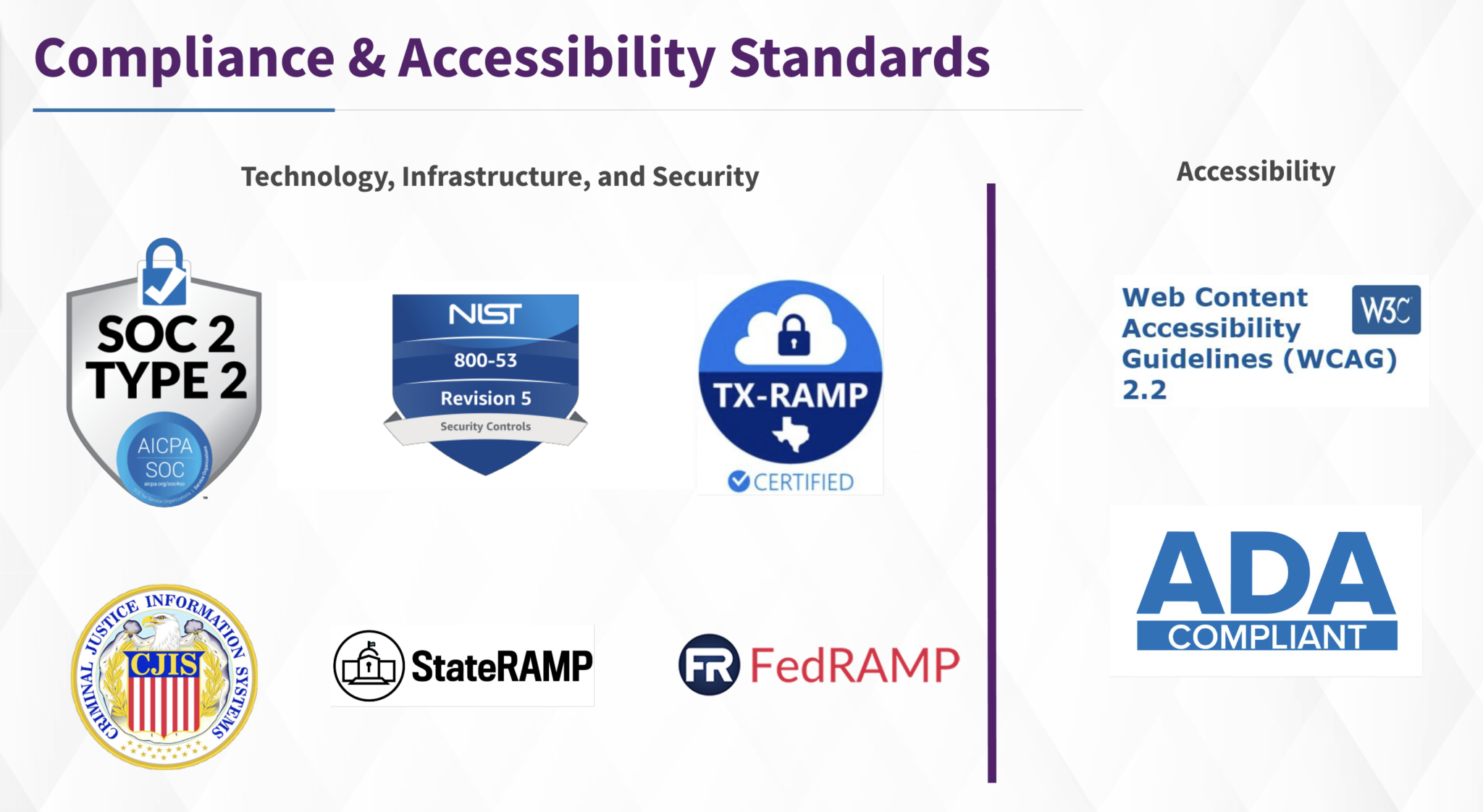In K-12 education, paper is everywhere. Managing paper records is time-consuming for school staff, inefficient, and prone to errors. A digital filing cabinet eliminates these challenges, providing a secure, organized, and accessible way to store and retrieve documents.
Let’s look at how making this change can improve service to parents and students, reduce costs, and speed academic and business processes.
The Types of Documents K-12 Schools Store
Most schools retain reams of paperwork that can span many years. Each student file can include:
- Enrollment documents, such as proof of residency, applications, and birth certificates
- Academic records, like attendance, grades, transcripts, and standardized test results
- Health records that incorporate immunizations, allergies, medications, and medical history
- Special education documentation, such as IEP/504 plans, assessments, and accommodations
- Sports and extracurricular activity forms, including medical clearance, parental permission, and fee payment receipts
- Incident reports that detail accidents, injuries, and disciplinary issues
K-12 schools and districts also retain hard copies of a wide variety of operational and administrative documents, such as:
- HR documentation, including offer letters, new employee onboarding forms, handbooks, teacher and staff contracts, payroll details, certifications, letters of intent, leave/PTO requests, and benefits enrollment
- Budget and financial records, like purchase orders (POs), invoices, purchase requests, receipts, departmental budgets, and expense reports
- Meeting minutes and policies, such as policy changes, school board meeting summaries, and curriculum guidelines
- Facility records, including maintenance logs, property leases, emergency plans, insurance coverage, and safety inspections
The Problem with Paper Records
Capturing, collating, and storing paper documents presents multiple problems for elementary, middle, junior high, and high schools and the districts that oversee them.
Documents get Lost, Damaged, or Misplaced
A paper record can be mislaid while passed around, end up buried in a pile on someone’s desk, or be accidentally thrown out or shredded. According to research quoted by AIIM, 7.5% of paper documents get lost, and 3.5% of the remainder are misfiled. On average, it costs $20 in labor to file a paper record, $120 to find a misfiled one, and $220 to reproduce a lost document.
25% of lost documents are never found.
Manual Searches Waste Valuable Time
Per the same AIIM article, office workers can spend up to 50% of their time searching through folders for specific documents. Such searches delay service to students and their parents and take staff members away from other important tasks.
Storage And Printing Costs Add Up Quickly
A study by PwC estimated that filling a four-drawer file cabinet requires $25,000 in labor. Additionally, pulling documents from it and adding to existing files costs around $2,100 annually. Given nationwide increases in commercial real estate, the cost per square foot for onsite document storage has risen significantly, and many schools also pay for offsite storage. The cost of printing documentation can also make a significant dent in your school’s budget. “At 2,000 sheets per day and 320,000 sheets per year, a school will spend $100 a day or $16,000 a year just on printing paper,” stated an article by Adobe.
Sensitive Information is at Risk in Unsecured Locations
Paper documents are susceptible to unauthorized access and theft. Even if a school has some electronic records, these can be just as vulnerable if not stored in a secure document management system.
According to the U.S. Department of Education, “School districts across the country are experiencing an average of five cyber incidents per week.” K-12 Dive quoted research conducted by the nonprofit K12 Security Information eXchange (K12 SIX) that showed the number of cyberattacks increased by 393 percent between 2016 and 2022. The article stated, “The average price for restoring data with backup technology — excluding ransom payments — was $3.76 million, or about the expense of 54 U.S. teaching positions.” This shows why cybersecurity has become such a high priority for school districts.
How a Digital Filing Cabinet Works
A document management system can solve all of the challenges detailed above. It provides a single repository for all student- and staff-focused records and administrative documentation. In addition to scanning paper files, K-12 schools also benefit from importing electronic files from multiple sources and formats. This eliminates issues caused by storing content in multiple physical and electronic silos.
Demo Day: How Softdocs Digitizes Every Student’s Cumulative Folder
Join Philip Askins, Solutions Engineer at Softdocs, for a 30-minute walkthrough of what a complete cumulative folder looks like in Softdocs—from document capture to secure archiving. See how Softdocs eliminates time-wasting tasks while giving staff instant access to the records they need.
Duration: 30 minutes

Here's how a document management platform functions like a much more efficient digital filing cabinet:
- Document Imaging & Capture. Scan and upload paper files into a central system. Once you’ve scanned documents, they’re automatically indexed, and extracted data updates student and business records. Paper forms are replaced by eForms that quickly capture data and make it usable. You can also use a web-based capture feature to batch upload documents from local drives and folders.
- Organized Like Your Filing System. Digital folders and labels mirror your current structure. Incoming documentation is automatically tagged and categorized by AI and machine learning to meet your school’s unique needs. Audit trails show a complete lifecycle for each document and make it easier to meet compliance standards.
- Instant Access & Searchability. Retrieve records in seconds with keyword searches. Mirroring your existing file structure makes it easy for staff to find documents by looking for them using the same categorization you previously applied to paper files. It takes a fraction of the time to pinpoint precise information in a digital repository.
- Integration with Your SIS, ERP, and Other Core Applications. Unlike ImageNow/Perceptive Content LearnMode, modern, cloud-based document management systems use a combination of API and IDP (intelligent document processing) integrations to connect with the systems your staff uses daily. This enables you to push and pull data to and from your SIS, ERP, and other core applications without manual entry.
Katy ISD’s Digital Transformation
With an enrollment of 96,000 students across 80 campuses, Katy ISD is one of the largest school districts in southeast Texas. Staff realized they were struggling with document loss and security, a particular issue for student records that must be protected to meet federal and state privacy requirements.
“We were finding that a lot of our paper was going missing,” said Mary Frances Schmidt, professional registrar at Katy ISD. “We had filing cabinets in hallways with sensitive information. It just wasn’t as secure as it should be. The paper process was just not efficient.”
Schmidt and her colleagues searched for a document management system that would allow them to replace filing cabinets with a single, secure, and centralized repository and selected Softdocs.
Now, content for students at all of Katy ISD’s 80 locations is readily accessible for teachers and office staff members while being protected from unauthorized access. The school district has reduced printing and storage expenses, expedited service, and increased productivity.
“We’re no longer ordering folders or printing to the capacity that we were, so that is an immediate cost savings right there,” Schmidt said. “Registrars can pause what they’re doing to answer the phone or talk to a parent and then easily come right back to where they were and not lose their work. It’s a time saver. It’s way more efficient and effective.”
The Future of Student Records: How Katy ISD Masters Cumulative Folders for Security, Compliance, and Efficiency
Is your district struggling with outdated processes for managing student records and ensuring compliance with Texas state standards? Katy ISD was facing similar hurdles—until they adopted secure document management and automated their workflows.
Duration: 60 minutes
.jpg)

The Benefits of Going Digital with Softdocs
No more lost or misplaced files. The ability to capture, aggregate, and manage documents in a secure repository makes document misfiling and loss a thing of the past. This significantly reduces the burden on administrative staff, enabling them to focus more on finding operational efficiencies and building relationships with students, parents, and colleagues.
Replacing onsite and offsite document storage with a digital filing cabinet also supports business continuity and disaster recovery plans. Redundant data backup and continuous uptime enable schools to maintain access to critical documents even in the event of a natural disaster, pandemic, or other incident.
Eliminates storage and printing costs. According to a report by Forrester on behalf of Adobe, a school can save an average of $13.50 per printed, scanned, or faxed document and $21.50 for every piece of paper that was previously mailed.
Replacing physical files with an electronic document repository also significantly cuts storage costs and frees up floor space for employee desks or other uses. Going digital also eliminates the high costs of storing documentation in an offsite facility and transporting files to and from it.
Secure access for authorized users anytime, anywhere. Teachers, office staff, and other personnel can quickly and easily retrieve the documents they need from any device and browser, whether they’re at their desk or on the go. Document- and user-level privileges allow administrators to control who can access, view, and edit content.
Improved cybersecurity and compliance. Managing documents in a secure data center that is SOC 2 Type II and NIST 800-53 compliant safeguards student privacy. This makes it easier for schools to comply with FERPA, HIPAA, and other mandates. It also supports a more robust cybersecurity policy and reduces the risk of ransomware and other kinds of attacks.
Streamlined workflows improve efficiency across departments. A piece of paper is limited to being in one location at any time. In contrast, an electronic version can easily be shared between multiple staff members in different departments with workflow automation. Conditional routing rules enable you to automatically send documents to the people who need to see them, accelerating review and approval processes.
A digital filing cabinet like Softdocs makes document management easier, more secure, and far more efficient than paper. Digitizing hard copies and combining them with content captured from electronic sources in a single, central repository speeds up service to students and parents, improves collaboration, and makes it easier to provide a quality education.
Want to see how Softdocs can have a positive impact at your school? Book your personalized demo now!
Softdocs
Tags


